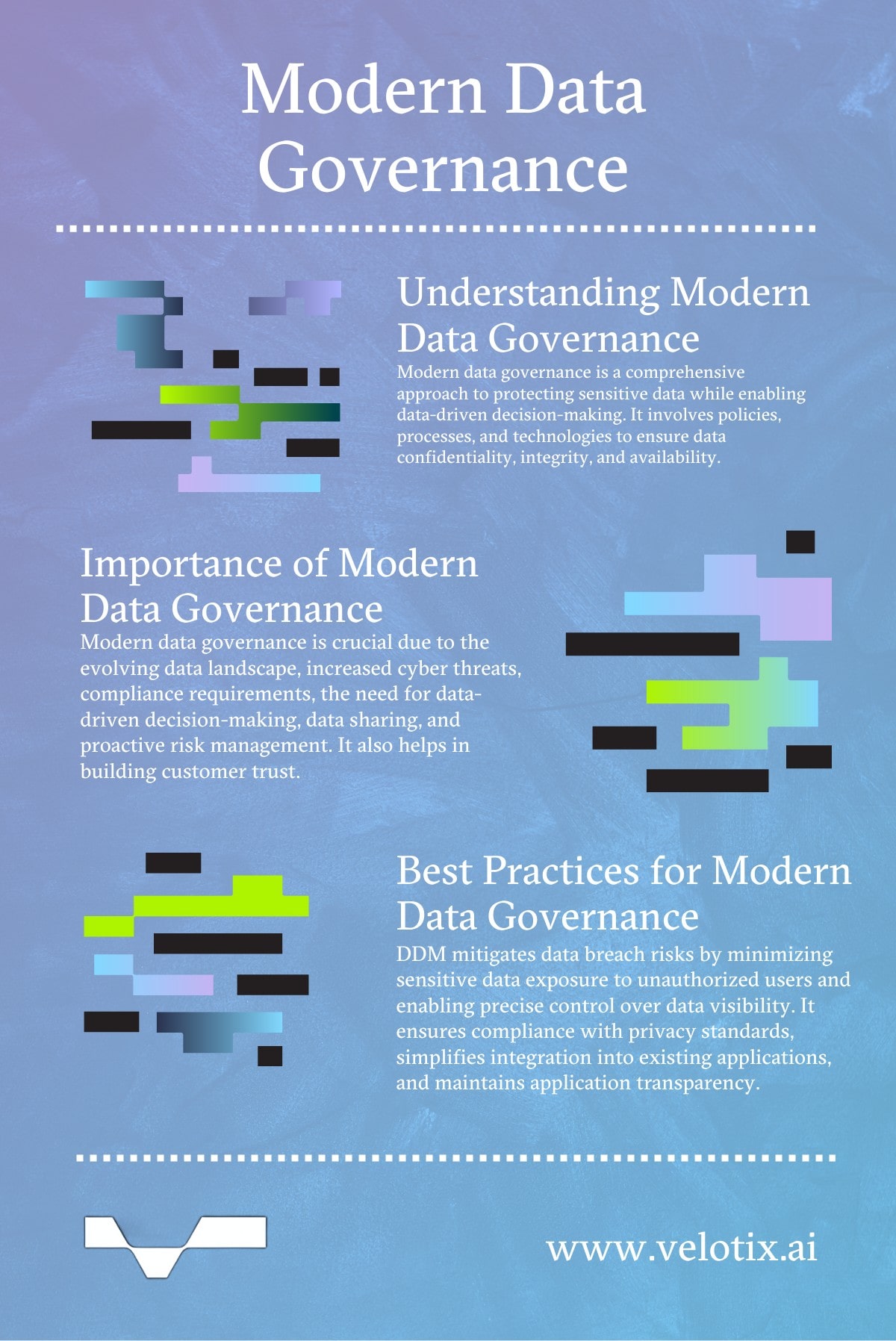What is Modern Data Governance?
Modern data governance refers to a comprehensive approach that focuses on protecting sensitive data from unauthorized access, breaches, and misuse while enabling data-driven decision-making. It involves a combination of policies, processes, and technologies that ensure the confidentiality, integrity, and availability of data throughout its lifecycle.
At the core of modern data governance for data security is the identification and classification of sensitive data. This process helps organizations understand what data they possess, where it resides, and who should have access to it. Data encryption and tokenization are used to safeguard data both in transit and at rest, preventing unauthorized parties from reading or tampering with the information. Access controls and role-based permissions play a vital role in modern data governance for security, ensuring that only authorized personnel can access specific data based on their roles and responsibilities. Continuous monitoring and auditing help detect unusual activities and potential threats, allowing organizations to respond promptly to security incidents.
Modern data governance also considers compliance with relevant data protection regulations, such as GDPR, HIPAA, or CCPA, and implements measures to ensure adherence to these rules. It is a proactive and dynamic approach that mitigates risks, safeguards sensitive information, and fosters a secure environment for leveraging data assets in a responsible manner.
Why is modern data governance important?
Modern data governance is necessary in data security for several reasons:
- Rapidly evolving data landscape: With the exponential growth of data and the adoption of new technologies, data landscapes have become more complex. Modern data governance provides a structured approach to manage and secure data across diverse platforms, systems, and devices.
- Increased data breaches and cyber threats: Cybersecurity threats are becoming more sophisticated, and data breaches are a significant concern for organizations. Modern data governance implements robust security measures and best practices to mitigate these risks and protect sensitive data from unauthorized access.
- Compliance with data regulations: Data governance ensures that organizations adhere to various data protection and privacy regulations, such as GDPR, CCPA, or HIPAA. Compliance with these laws is crucial to avoid legal penalties and reputational damage.
- Data-driven decision-making: In today’s business landscape, data is a valuable asset that drives decision-making processes. Data governance ensures the availability, accuracy, and integrity of data, enabling organizations to make informed and reliable decisions.
- Data sharing and collaboration: In a connected world, data is often shared with partners, vendors, or other stakeholders. Modern data governance establishes rules and protocols for secure data sharing, safeguarding sensitive information while facilitating collaboration.
- Proactive risk management: Data governance focuses on risk identification and mitigation. By adopting a proactive approach to data security, organizations can stay ahead of potential threats and vulnerabilities, minimizing the likelihood of data breaches.
- Building customer trust: Data breaches and privacy violations erode customer trust. Modern data governance demonstrates a commitment to safeguarding customer data, enhancing trust and loyalty among clients and stakeholders.
In summary, modern data governance is essential in data security because it provides a structured and proactive approach to manage, protect, and utilize data effectively, enabling organizations to mitigate risks, comply with regulations, and make data-driven decisions securely.

Modern Data Governance Best Practices
Modern data governance best practices encompass a set of strategies and principles that organizations should follow to effectively manage, protect, and optimize their data assets. Here are some key best practices:
- Data Classification and Inventory: Categorize data based on its sensitivity and value, and maintain a comprehensive inventory of data assets and their locations.
- Data Privacy and Security: Implement robust security measures, including encryption, access controls, and monitoring, to safeguard data from unauthorized access and breaches.
- Data Quality Management: Establish processes to ensure data accuracy, consistency, and completeness, maintaining high data integrity.
- Data Governance Framework: Develop a structured governance framework defining roles, responsibilities, and processes for data management, security, and compliance.
- Data Access and Sharing Controls: Enforce role-based access controls to limit data access to authorized users and implement secure data sharing protocols for external collaboration.
- Data Compliance and Regulations: Stay up-to-date with relevant data protection regulations and ensure adherence to applicable laws, such as GDPR, CCPA, or HIPAA.
By following these modern data governance best practices, organizations can create a robust data governance framework that not only ensures data security but also maximizes the value of data for better decision-making and business success.